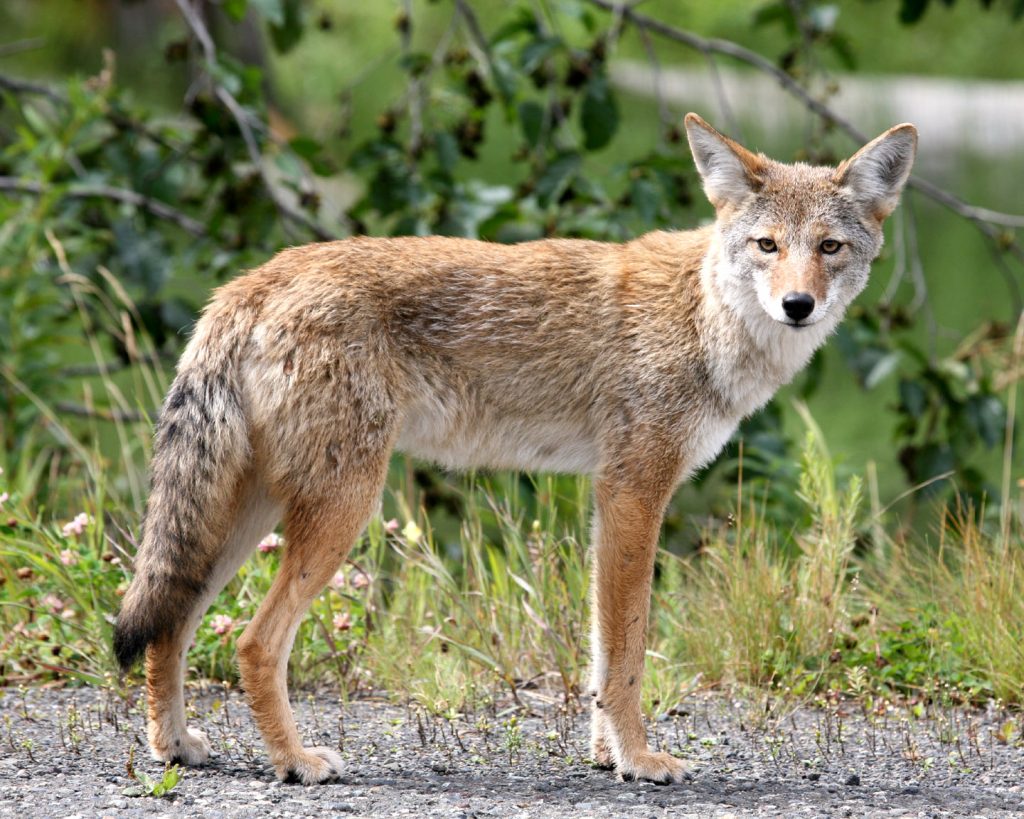
For lucky morning hikers at the Stanford Dish, a glimpse of pointed tan ears prancing through the tall, heathered grass is cause to reach for a camera. For California’s ranchers, the same sight is reason to reach for a gun.
Coyotes are the most populous native predators in the state – and the most frequently killed. Their ability to adapt to both urban and rural settings when faced with human encroachment has set them apart from their cousins, the gray wolves, and kept them off the endangered species list. Instead, they’ve landed a spot on the list of non-game animals excluded from California’s wildlife protection policy, meaning they can be hunted no-questions-asked by anyone, any time. Yet, California’s coyotes remain anything but quiet. As populations rise and conflicts escalate, the standing management plan is being called into question.
On May 15th, the Wildlife Resources Committee (WRC) of California’s Fish and Game Commission hosted a town hall meeting in Sacramento to discuss a proposal for adding coyotes to the “no take” species list. Making this change would prevent citizens from killing the animals without valid evidence of property damage. However, the backlash the WRC received from ranchers and hunters outweighed calls for more humane treatment of wildlife, leading the committee to table any immediate changes to coyote hunting status in the state.
“Ultimately, the WRC is seeking to engage stakeholders and the public in problem solving,” said committee chair Darius Anderson. The “no take” proposal was first introduced by the WRC in January and then moved to the greater Fish and Game Commission for review but was later pulled back to the committee due to concerns that citizens were not involved in the creation of the proposed new coyote regulations.
Over 550 attendees joined the meeting both in person and online to voice their concerns or desires for amendments to existing wildlife laws, demonstrating the interest in the issue from a variety of stakeholders. Ranchers in particular had a bone to pick with the state’s most rampant scavengers since coyotes have been known to prey on calves, sheep, and poultry. While agricultural land conversion has driven out many native species out of their habitats, some coyotes in rural areas have adjusted their palate to include local farm animals.
“I always was pleased to see coyotes in my field doing rodent control… That said, I was also really upset when I’d go out and I’d see buzzards circling, which meant there was a dead calf,” said Ned Coe, chair of the Board of Supervisors of Modoc County and lifelong livestock producer, during the town hall discussion. “That is my livelihood, and to do anything that hampers my ability to be able to deal with that individual coyote or group of coyotes greatly reduces my ability to raise wholesome beef to feed the nation.”
While the committee acknowledged farmers’ tensions with coyotes, they worry that coyotes are being lethally removed based on fear alone without evidence of property or livestock damage, which does not align with California’s general wildlife protection principles. Since many ranchers operate under extremely slim margins, they are not willing to take any chances when they see a wild predator nearby, meaning coyotes are often taken on sight.
“The USA has a longstanding culture of killing off large carnivores in favor of assuring that our livelihoods can take priority,” shares Christine Wilkinson, postdoctoral researcher at the University of California Santa Cruz and the California Academy of Sciences. This culture of carnivore removal has resounding impacts beyond predator populations. According to Wilkinson, coyotes serve “an important ecological role as part of California’s food chain” by regulating smaller carnivores like raccoons and foxes and preventing the spread of disease through prey species.
“Coyotes play a vital role in maintaining healthy ecosystems by regulating rodent populations and supporting biodiversity,” Dave Parsons, wildlife biologist and founding board member for conservation nonprofit Project Coyote, adds. “Unlimited killing destabilizes this natural balance, leading to ecological decline.”
In fact, that sort of unlimited killing can backfire on would-be predator control efforts. According to research from Project Coyote’s scientific advisory board, indiscriminate killing can actually increase population sizes of coyotes over time since it causes disturbances to their social structure. When left untouched, coyotes naturally stick in self-contained family packs. Only one dominant pair of coyotes will reproduce, which helps the group maintain a stable size, based on food and habitat resources within a given area. However, when one or more dominant partners are killed, the social hierarchy is thrown into disarray, and subordinate members begin to disperse and find mates outside of the pack. New coyotes move in from surrounding areas and breed at younger ages, ultimately causing a surge in population and perpetuating clashes with farmers.
Rather than continuing to fight a lose-lose battle against California’s canines, ecologists tuned into the May 15th meeting to advocate for no-take policies. “Natural predators exist to keep herbivore populations in check,” wildlife biologist Bill Woodbridge of the Santa Barbara Sierra Club’s executive committee commented during the town hall. He points out that predators seek weaker individuals when hunting, which actually prevents the spread of infection in other species and promotes resilient ecosystems without the need for human intervention. “Let nature do its thing.”
Though farmers are less inclined to leave their fate in Mother Nature’s hands, Parsons reminded the committee that there are nonlethal methods for mitigating rancher-coyote conflict such as electric fencing, guard animals, and removal of dead livestock. Project Coyote additionally recommends eliminating access to garbage, bird feed, and other food sources and keeping pets indoors at night to alleviate urban coyote encroachment.
Despite ecologists’ assertions that strengthened conflict-reduction programs could ensure coexistence with coyotes, the cries of ranchers opposing new legislation were overwhelming, leading the committee to retreat from their “no take” proposal.
With no agreement being reached, the WRC is set to revisit the issue in September; until then, open season for coyote hunting continues in the Golden State.

